Overview
Inverters have large output capacitors to filter the switching noise when they are generating power. This results in moderate reactive power (capacitive) when the inverter is generating no power, because of the current flowing in and out of these filter capacitors every 60 Hz cycle. Current transformers have small phase angle errors which can cause a portion of this reactive power to appear as positive or negative real power.
Typical split-core CTs have leading phase angle errors ranging from 0.5° to 4°, while typical solid-core CTs have smaller leading phase angle errors in the 0.1° to 0.5° range. Some models of WattNode meters have a phase angle compensation adjustment, which could be used to help reduce this effect. But CCS recommends that only users with suitable calibration test equipment adjust the phase angle compensation.
These traditional types of CTs have been superseded by our patented Accu-CT split-core CTs with phase angle errors as low as 0.25 °, which eliminates the need for phase angle compensation adjustment.
Inverters also draw a small amount of power when they are idle to power their internal circuitry. So you should expect a small flow of power into the inverter when it isn’t generating power. The manual for the inverter should document the typical power draw. The meter may see this as positive or negative power, depending on whether you treat generated power as a positive or negative.
Solutions
It isn’t possible to perfectly correct for the small night time error due to reactive power. In most situations, the user should disregard this small error. However, if the error is large enough to be a concern, the following suggestions should help.
WattNode Pulse
This effect can generally be minimized by using Accu-CT current transformers, but it may not be possible to eliminate. There is no adjustment for the CT phase angle compensation on WattNode Pulse models.
WattNode for LonWorks
This effect can generally be minimized by using Accu-CT current transformers, but it may not be possible to eliminate. CT phase angle compensation on WattNode for LonWorks meters is not adjustable by the user but can be configured at the factory.
WattNode BACnet and Modbus
CT phase angle compensation can be adjusted by the user on BACnet and Modbus meters. When using Accu-CTs with very low phase angle errors, there is usually no need to adjust phase angle correction:
| User Adjust | Modbus Register | BACnet Property |
|---|---|---|
| PhaseAdjustA | (1516) | 20 |
| PhaseAdjustB | (1517) | 21 |
| PhaseAdjustC | (1518) | 22 |
Phase angle compensation is in units of millidegrees (thousandths of a degree), and a negative adjustment value corrects for a leading phase angle errors in the CT (most typical). Typical split-core CTs have leading phase angle errors ranging from 0.5° to 4°, and require adjustments from -500 to -4000 millidegrees to correct. Typical solid-core CTs have smaller errors in the range of 0.1° to 0.5° and will require adjustments from -100 to -500 millidegrees to correct.
To make matters more complicated, the phase angle error of a CT tends to increase at low currents, and the nighttime current flow due to the inverter filter capacitors is probably less than 2 amps. So if you correct perfectly for the nighttime operation, you may be overcorrecting for daytime. On the other hand, when the inverter is generating power, the power factor will be very near 1.0 and the CT phase angle error will have a negligible effect (the CT phase angle error causes increasing errors as the power factor approaches zero).
If possible, email support the real and reactive power at night when the inverter isn’t generating any power. This will allow us to determine an appropriate phase angle correction.

